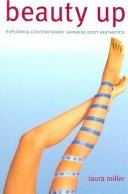| Listing 1 - 2 of 2 |
Sort by
|
Dissertation
Year: 2020 Publisher: Liège Université de Liège (ULiège)
Abstract | Keywords | Export | Availability | Bookmark
 Loading...
Loading...Choose an application
- Reference Manager
- EndNote
- RefWorks (Direct export to RefWorks)
The beauty industry is more and more prolific and complex every day, with new brands arising exceptionally fast. For the longest time, this industry was controlled by a handful of traditional groups, yet today, the rise of digital technologies and the massive shift in customers’ taste fostered the lowering of barriers to market entry. Combined with the attractiveness of social media platforms in terms of audience and the expanding power of influencers – who detain the vast majority of views compared to brands – as well as consumers’ growing immunity towards traditional advertising, the beauty industry happens to be a very prolific field for influencer marketing, especially given the enormous reliance of generation Z and Millennials on recommendations from peers and opinion leaders on social media platforms. This paper aims to identify the elements that shape the decision to opt for a certain form of influencer marketing strategy in this specific industry. From the type of goal to the measurement of the results, passing by the selection process and the authenticity of the message, the author wishes to cover the majority of influencer marketing’s strategic elements, and furthermore, bring light on the elements that may vary depending on the type of business. In light of the above, the author first laid the background of influencer marketing in the grand scheme of communication by analysing the literature at different levels as a theoretical review. Moreover, a contextual review took place in order to study the critical elements revolving around the beauty industry. Subsequently, two different quantitative types of research were conducted – on sponsors and influencers from all tiers – in order to refine the literature and analyse strategic elements highlighted by sponsors. The latter is usually not presented in the literature due to its undisclosed character in such a competitive market. Influencers bring a view on contextual elements, solely observable in the field. Finally, this study offers a full-length view of influencer marketing to brands, retailers, and agencies willing to perform influencer marketing in the beauty industry. This paper may take the shape of a guide on good practices depending on the type of business, with a perspective on the influencers’ point of view, which provides a basis to avoid potential bottlenecks.
Influencer Marketing --- Beauty Industry --- Sponsors --- Social Media Marketing --- Influencers --- Sciences économiques & de gestion > Marketing

ISBN: 9780520938847 0520938844 128277185X 1601293976 1429402342 9781429402347 9780520245082 0520245083 9780520245099 0520245091 9781601293978 9786612771859 6612771852 Year: 2006 Publisher: Berkeley : University of California Press,
Abstract | Keywords | Export | Availability | Bookmark
 Loading...
Loading...Choose an application
- Reference Manager
- EndNote
- RefWorks (Direct export to RefWorks)
This engaging introduction to Japan's burgeoning beauty culture investigates a wide range of phenomenon-aesthetic salons, dieting products, male beauty activities, and beauty language-to find out why Japanese women and men are paying so much attention to their bodies. Laura Miller uses social science and popular culture sources to connect breast enhancements, eyelid surgery, body hair removal, nipple bleaching, and other beauty work to larger issues of gender ideology, the culturally-constructed nature of beauty ideals, and the globalization of beauty technologies and standards. Her sophisticated treatment of this timely topic suggests that new body aesthetics are not forms of "deracializiation" but rather innovative experimentation with identity management. While recognizing that these beauty activities are potentially a form of resistance, Miller also considers the commodification of beauty, exploring how new ideals and technologies are tying consumers even more firmly to an ever-expanding beauty industry. By considering beauty in a Japanese context, Miller challenges widespread assumptions about the universality and naturalness of beauty standards.
Human body --- Beauty, Personal --- Beauty culture --- Body image --- Philosophy, Japanese. --- Japanese philosophy --- Image, Body --- Imagery (Psychology) --- Mind and body --- Person schemas --- Personality --- Self-perception --- Cosmetology --- Beauty shops --- Cosmetics --- Beauty --- Complexion --- Grooming, Personal --- Grooming for women --- Personal beauty --- Personal grooming --- Toilet (Grooming) --- Hygiene --- Body, Human --- Human beings --- Human anatomy --- Human physiology --- Social aspects --- Japan --- Social life and customs. --- J4154 --- Japan: Sociology and anthropology -- customs, folklore and culture -- the body, personal hygiene, bathing --- aesthetic salons. --- beauty culture. --- beauty ideals. --- beauty industry. --- beauty language. --- beauty standards. --- beauty work. --- body aesthetics. --- body hair removal. --- consumer society. --- contemporary history. --- contemporary japan. --- cosmetic surgery. --- cultural criticism. --- diet and health. --- elective surgery. --- gender ideology. --- identity management. --- japanese culture. --- japanese men. --- japanese women. --- male beauty. --- men and women. --- nonfiction. --- plastic surgery. --- popular culture. --- social science.
| Listing 1 - 2 of 2 |
Sort by
|

 Search
Search Feedback
Feedback About
About Help
Help News
News